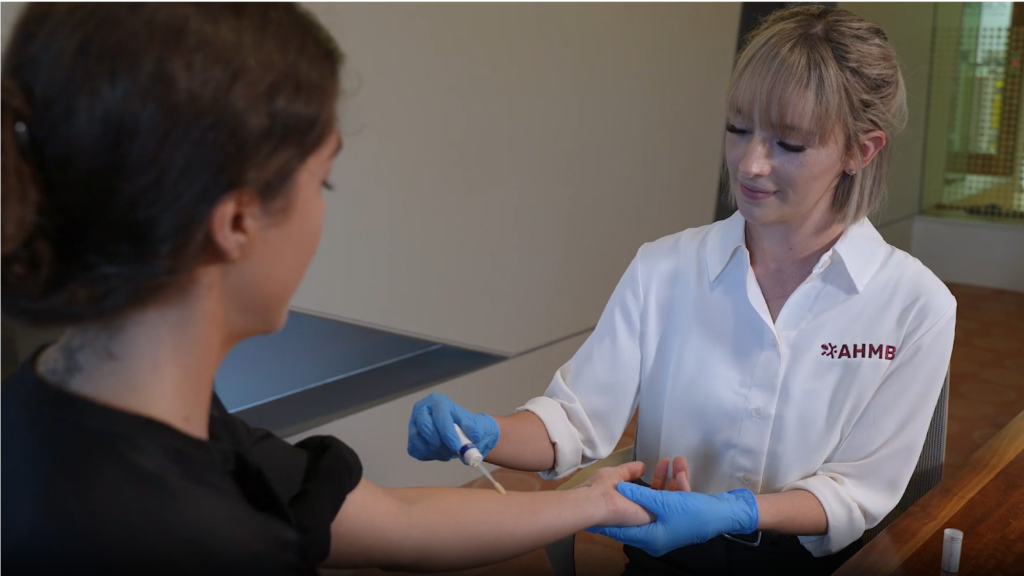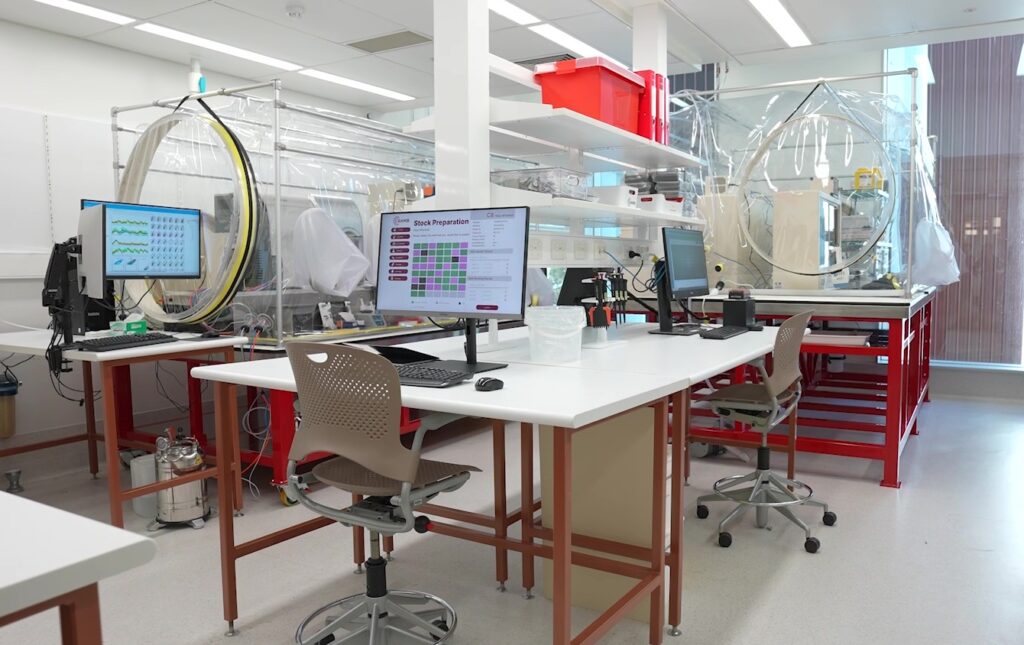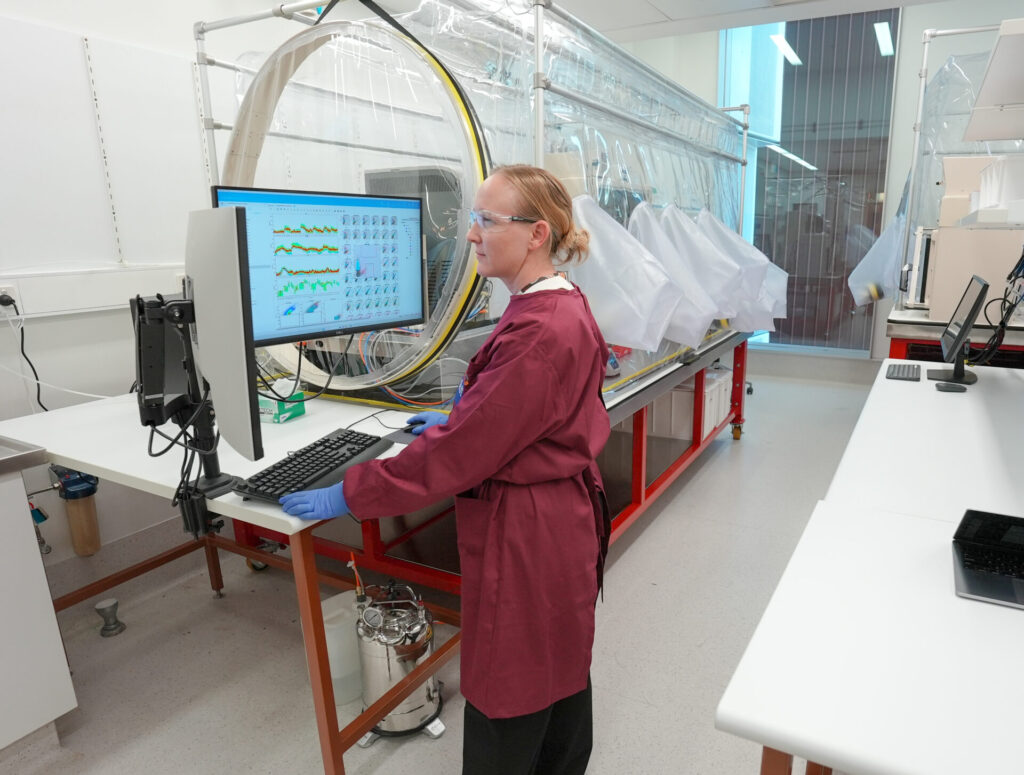Have you ever wondered how we can obtain a range of different, individual bacterial isolates from the sample that you provide to the Australian Human Microbiome Biobank? Well, at AHMB we have an impressive, high-throughput workflow which allows us to get all kinds of bacteria from the samples you provide. Let’s take you through the journey of your sample when it arrives with us at AHMB.

Once we have acquired a sample, we ensure that the sample is brought immediately into the lab and accounted for. Your sample is first deidentified by an independent AHMB staff member who will not be associated with any work with samples in the lab. Staff members working in lab space will not be privy to sample information, these details remain separate to the lab sample. Once the sample has been deidentified, it can be accessioned and coded within our laboratory inventory management system, or LIMS. This ensures that we are able to track the sample throughout the entire workflow, from receipt of sample in the lab through to banking the bacterial isolates that we get from your sample. Since the AHMB is a one-of-a-kind facility, we have had our LIMS custom-built by a developer, meaning that it perfectly matches the workflow we have in place. This helps us to maintain perfect record keeping and quality.

Ensuring the sample is processed quickly after receiving it from a donor is particularly important for our stool samples – microbes which live in our gut thrive in a warm temperature of 37 degrees, that is free from oxygen, or anaerobic. We need to replicate this in order to see the most diversity from your sample. Thus, it is essential that these stool samples are placed immediately into a warm incubator which is in an anaerobic environment. Our custom build chambers accommodate perfectly for this, which you can read about in our ‘Meet the Instruments’ post. These conditions are perfect for the microbes in your sample to remain happy whilst we prepare for the next stages of your sample’s journey. Your sample, and its microbes which we isolate, remain in the anaerobic chambers for the entirety of the workflow until the microbes are ready to be frozen in biobank storage.
Once your sample has arrived in its optimal environment, the first stage of its journey within the laboratory is at the Cytek Aurora CS. The Aurora is a spectral, fluorescence-activated cell sorting machine and forms the basis of the workflow at AHMB. The Aurora allows us to derive individual colonies of bacteria from the samples that you provide to our biobank. We do this by diluting your sample to an appropriate working concentration – usually a stool sample would be diluted quite substantially as there is an abundance of bacteria that we can extract from your sample. We then run the dilution through the Aurora, which is able to sort single, unique microbial cells into respective wells on a 96-well plate. This can be done as many times as we like with a sample; we have the chance of getting up to 96 isolates per plate we sort onto.


The next step of a samples journey within the lab is incubation. As mentioned, the optimal growth temperature of bacteria we isolate from samples is a warm environment. The bacteria are left to incubate until they have grown to a size that we are able to pick with our PIXL colony picker, leading us to the next stage of our journey.
Colonies which are ready to pick move to the PIXL colony picker. Here, our team can program the PIXL to pick any colony we ask. The PIXL is set up by the team to pick all the colonies which have grown enough to be transferred to a new growth medium where we are able to propagate and upscale the colony to get it ready for biobanking. Once the PIXL is aware of the colonies that we would like to be picked, it will pick and take an image of each colony and transfer the colonies to a new growth medium of our choice, at this stage usually a liquid medium as this allows for upscaling of the colony. Once transferred into the new growth medium, the colonies go back into the incubators for another incubation period to allow them to grow further, bringing the sample to its final stages of the biobanking process.

Colonies are mostly picked into a 96-well plate containing liquid media. Once the colonies have had time to grow in their new media, we use our plate reader to measure the optical density of the respective colonies which we interpret as growth, where a higher optical density means that there is more bacteria present. When we are satisfied with the growth of a bacterial colony, the colony is ready to be banked.
Our banked colonies are preserved in ultra-low temperature freezers held at -80 degrees Celsius. Due to the extreme temperature of the freezer and considering the colonies must remain in an oxygen free environment, we store the colonies in special tubes. These tubes are able to withstand the ultra-low temperature of the freezer, and seal in a manner that the anaerobic environment is maintained within the tube – oxygen is unable to enter the tube once we close it. Whilst we bank the colonies, we also put aside a small amount of sample which we send of to be sequenced, enabling us to identify the bacterial colony that we have isolated.

Throughout the entire process, we use our custom-built LIMS to record details of the isolate such as its preferred growing conditions, how quickly it may grow, its morphology including the images taken by the PIXL, and other relevant information which is important to maintain quality control throughout the workflow.
A range of novel bacterial isolates gathered from a sample that you provided to the biobank have now been banked in our facility! From here, your donation contributes to research Australia wide! Australian researchers can use our service to obtain bacterial isolates of their choosing relevant to their area of study, ultimately improving resources for Australian scientists.
Your donation will make a difference in research discoveries, assisting in expanding scientific knowledge, improving treatment and therapeutic outcomes and ultimately improving the quality of life of patients suffering from a variety of diseases and conditions. We pledge you to please get involved today!

